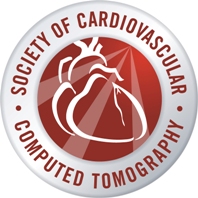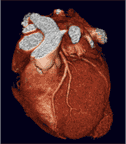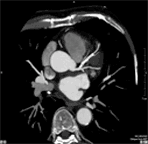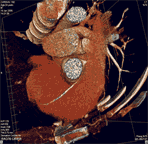|
 THE FACTS ABOUT LEVEL 3 THE FACTS ABOUT LEVEL 3 |
|
SCCT Guidelines
In order to be certified as Level 3, the SCCT guidelines indicate that the physician must:
- be proctored for 300 cases (not by passively watching a video of an expert reviewing cases)
- undergo additional didactic training
- publish a peer-reviewed research article, speak at a national CTA meeting, or run a CME course in CTA
|
In February 2007, the SCCT began to regulate training courses with a SCCT endorsement. The criteria are listed below (SCCT Endorsement Criteria).
In short,
they want a year of experience plus recognition as a luminary in the field. Therefore, the students who train to Level 3 to shortcut the system and train their partners are not meeting the SCCT guidelines.
|
Dr. DeFrance's Statement on this matter:
It is our view that in order to become an instructor of CTA, one must become an experienced Level 3 physician and read thousands of studies to understand the intricacies and nuances of the technology. Moreover, the Level 3 instructor would have to develop a full teaching curriculum, a wide variety of cases, and have the resources to conduct the 80 plus hours (per student) it takes to proctor physicians to Level 2. They must have access to 50 live cases as well.
The SCCT has hired an auditing company to "crack down" on the less stringent training programs that are appearing. Simply put, they will require evidence that the cases were truly proctored by an experienced Level 3 instructor. Full documentation of the variety of pathologies must be demonstrated.
The obvious underlying concern here is medical liability. Without extensive experience in CTA, a new Level 3 certified physician is opening him or herself to liability by under‐training their students. If a student is sued for missing a diagnosis, the liability could head upstream to the trainer. In conclusion, it is not financially or legally advantageous to consider setting up a training program to train physicians. The standards are becoming more rigorous and the societies are becoming more concerned with inexperienced instructors. |
|
|
|
THE
FACTS |
 Level 3 certification requires a year of teaching experience plus access to a full curriculum with a variety of cases Level 3 certification requires a year of teaching experience plus access to a full curriculum with a variety of cases
 The standards are becoming more and more stringent The standards are becoming more and more stringent
 Liability is an issue for new Level 3 instructors Liability is an issue for new Level 3 instructors
|
|
|
|
|
|
SCCT Endorsement Criteria
- The training program should have been in existence for one (1) year with at least a total of twenty (20) participants trained by the time of application.
- A training program course curriculum demonstrating the didactic elements as described in the ACC/AHA Cardiovascular CT competency statement must be submitted.
- The training program must demonstrate that the participants in the training program had a mechanism to submit comments, evaluation and criticism of the training program.
- The curriculum vitae of the Course Director must be submitted and must demonstrate scholarly work in the field of cardiovascular CT to possibly include publications, abstracts, relevant invitations to present teaching lectures, previous history of organizing specific cardiovascular CT related meetings, leadership activities within SCCT.
- The Training Program Course Director(s) must be SCCT members in good standing. The Training Program faculty members are recommended to be SCCT members, but are not required to be SCCT members.
- Participants in the training program courses must have hands‐on workstation experience with a maximum of two (2) participants per workstation. Clinical correlation must be available for CT data sets read.
- The training program must provide upon completion of training, a certificate of course participation to include the following information:
• The number of cases covered and completed and whether the cases were contrast or non‐contrast CCT studies
• Whether the training program course participant was physically present and involved in the acquisition and interpretation of the case
• Whether that patient’s data was manipulated and reviewed by the training program course participant interactively on post processing workstations, with a maximum of two participants per workstation.
• Whether correlation to invasive coronary angiography was available for each of the cases.
• The number of hours of lectures and/or CME credits
• Accompanying data must include an anonymous patient list (using patient initials, or code number, etc.) enumerating and identifying the indication and diagnosis list for each component of training.
|
|
|




